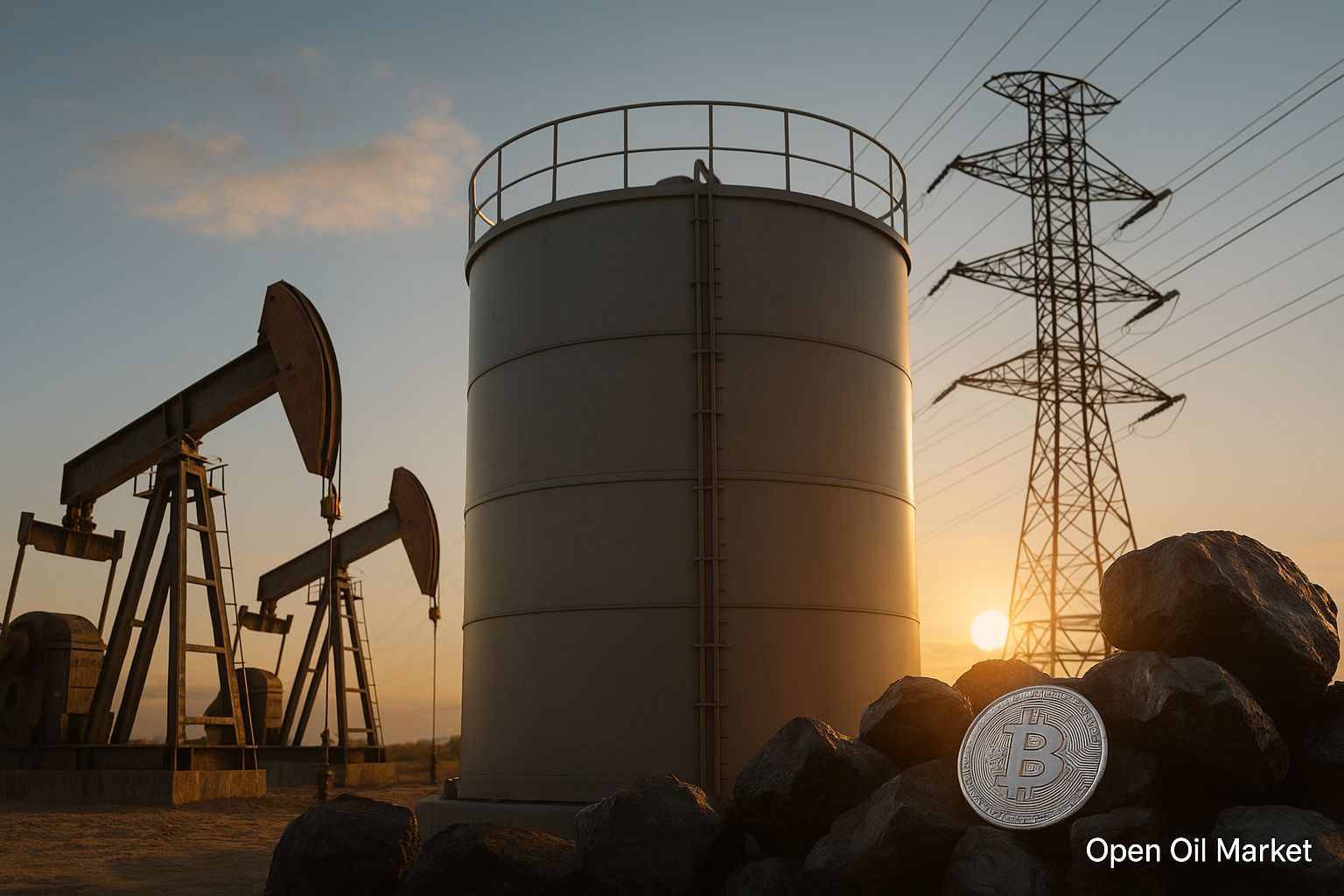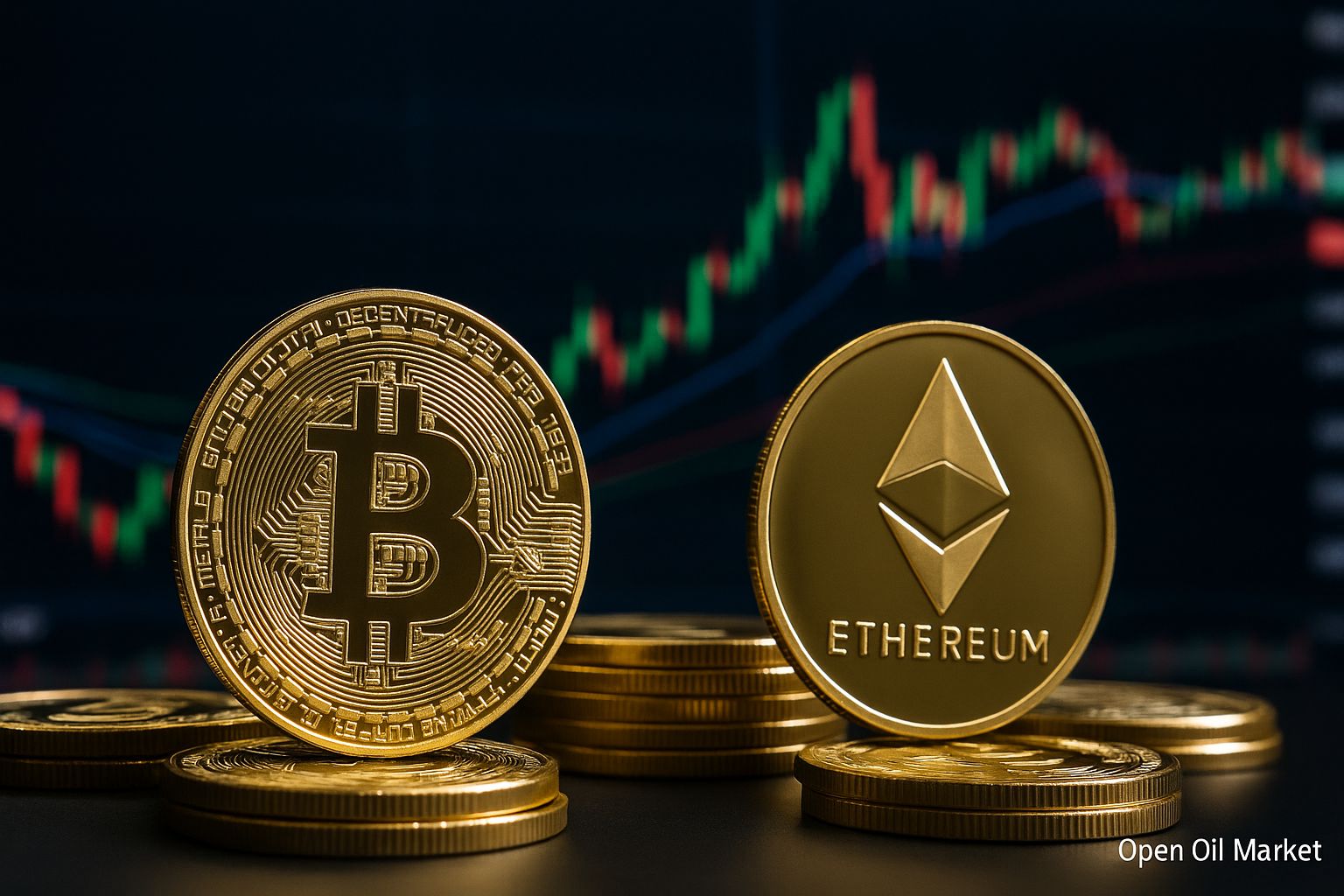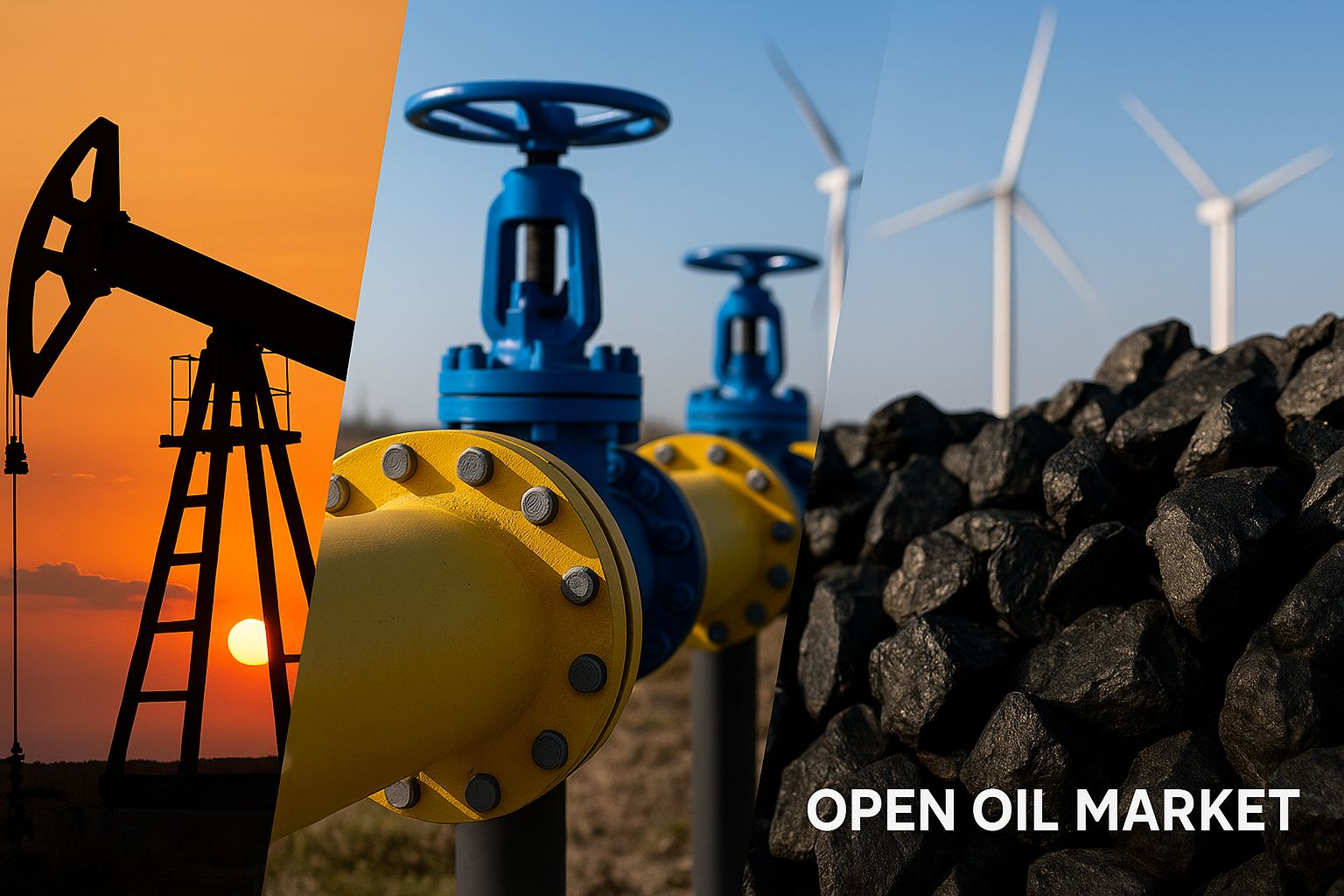
Energy Sector Key News as of October 31, 2025: The U.S.-China Trade Truce Supports Oil Prices, Record Gas Reserves in Europe Ensure Stability, and the Russian Fuel Market Recovers After Crisis. An Analysis of Key Events and Prospects for Investors.
Current events in the fuel and energy sector (FES) as of October 31, 2025, unfold amidst an ongoing geopolitical standoff, yet positive signals have emerged in the markets. The sanctions confrontation between Russia and the West continues unabated: recently, the U.S. imposed stringent restrictions on the largest oil and gas companies in Russia, while the European Union closes the last loopholes to bypass the embargo. However, the global economy has received a boost of optimism – during a meeting on October 30, leaders of the U.S. and China agreed to a trade truce, avoiding a new round of tariff wars. The prospects for a thaw in relations between the two largest economies have improved forecasts for global energy resource demand and bolstered sentiments in commodity markets.
At the same time, the commodity markets demonstrate relative stability. Oil prices, which fell to multi-month lows earlier this autumn, are holding in a moderate range: Brent oil is trading around $65 per barrel, while WTI hovers around $61. Recent news on sanctions has caused price volatility (Brent briefly rose above $66), but overall, the balance of supply and demand remains delicate, leaning towards a surplus. The European gas market confidently enters the winter with record fuel reserves: EU underground storage facilities are over 95% full, which has driven gas prices down to a comfortable ~€30 per MWh (significantly lower than the peaks of 2022). The global energy transition is gaining momentum – investments in renewable energy are hitting records, the share of renewables in electricity generation continues to grow, although countries still rely on traditional resources for meeting base-load demand. In Russia, emergency measures to stabilize the domestic fuel market are yielding results: gasoline and diesel production has recovered, wholesale prices have decreased from peak levels, and gas stations are well supplied. Below is a detailed overview of key segments in the oil, gas, coal, and energy markets as of the current date.
Oil Market: A Balance of Surplus and Risks Amidst Trade Truce
Global oil prices remain under pressure from fundamental factors, despite short-term spikes. After a fall to multi-month lows in autumn, Brent quotes stabilized within ~$60–65 per barrel, significantly lower than the beginning of the year. The market expects a scenario in which oil supply will exceed demand by the end of 2025. Several trends contribute to this:
- Increasing Production Amidst Slowing Demand. OPEC+ countries will continue to gradually increase production: in October, the total quota was raised by approximately 0.14 million barrels per day, with a similar move expected in November. Simultaneously, major non-OPEC producers – primarily the U.S. and Brazil – are producing record volumes of oil. However, the growth in global consumption is slowing. According to the International Energy Agency (IEA), demand for oil in 2025 will increase by only ~0.7 million barrels per day (compared to a gain of over 2 million in 2023). The global economy is growing moderately, the effects of past price peaks have stimulated energy conservation, and the accelerated spread of electric vehicles is curtailing fuel consumption growth. Earlier in 2025, the escalation of trade disputes between the U.S. and China also restrained demand, but now the conclusion of a trade agreement between Washington and Beijing improves forecasts and reduces uncertainty.
- Geopolitics and Sanction Risks. The intensification of sanctions against the Russian oil sector continues to foster uncertainty in the oil market. The U.S. has effectively banned cooperation with key Russian oil companies, sanctioning, among others, Rosneft and Lukoil. The European Union and the UK are closing loopholes for trading Russian energy resources (including banning the re-export of oil products made from Russian raw materials through third countries). The possibility of a complete international embargo on Russian oil is also under discussion. Simultaneously, military risks persist: in recent months, attacks on oil infrastructure in Russia by drones have increased, resulting in temporary halts at certain refineries and reduced output. Finally, political pressure on major importers of Russian raw materials is beginning to have an effect: for instance, under the influence of Western partners, India has indicated its readiness to gradually reduce purchases of Russian oil in the future, although it cannot immediately abandon it. Any abrupt export restriction from Russia – whether due to sanctions or force majeure – could cut global market supply and trigger a price spike.
Thus, the oil market is currently balancing between an oversupply and geopolitical risks. The excess of production over demand is preventing prices from rising significantly, but the shocks from sanctions and potential shifts in flows (e.g., a reduction in Indian imports) sustain prices from falling significantly below current levels. Many analysts expect that, in the absence of new shocks in the coming months, oil will trade relatively cheaply – in a range around $60 per barrel – which is advantageous for consumers. At the same time, producers and investors remain cautious, considering the possibility of sudden changes in the market environment.
Gas Market: Record Reserves in Europe and Reorientation of Flows
The gas market has created a favorable situation for consumers, especially in Europe. The continent is entering the winter period with unprecedented gas reserves: underground storage in EU countries is over 95% full, which is 5–7% higher than last year's levels. A mild autumn and robust LNG imports have allowed for these reserves to accumulate without the need for emergency measures, leading to stabilized wholesale gas prices at low levels. Futures at the TTF hub hover around €30–35 per MWh – this is drastically lower than the peak prices of 2022. The probability of a repeat of last year’s price crisis has significantly decreased, although much will depend on how cold the winter turns out to be and whether any interruptions in LNG supplies occur.
- Europe is Prepared for Winter. Record gas reserves in the EU create a robust buffer in case of prolonged cold spells. Demand for gas in the region remains restrained: the economic growth of the EU is low, and additionally, high renewable energy output in autumn has reduced the load on gas-fired power plants. Even in the event of anomalous frosts, a significant part of any additional consumption will be covered by reserves, which markedly reduces the risk of shortages.
- Record LNG Imports. To compensate for reduced pipeline supplies from Russia, European countries have ramped up purchases of liquefied natural gas. The decline in LNG demand in Asia this autumn has freed up additional volumes for Europe. Major suppliers – the U.S., Qatar, Australia, and others – are operating at maximum export capacities, redirecting fuel to the European market. LNG imports have almost completely replaced the volume of Russian pipeline gas and even cover the decline in output from North Sea fields. The high influx of LNG helps keep the market balanced and prevents sharp price fluctuations.
- Russia’s “Eastern Turn.” Having lost a significant part of its European market, Russia is actively reorienting its gas exports to the East. Supplies through the Power of Siberia pipeline to China in 2025 have reached record levels (close to project capacity of ~22 billion cubic meters per year). Moscow is also advancing new projects: preparations are underway for the construction of the Power of Siberia-2 pipeline through Mongolia, which by the end of the decade will partially offset lost European demand. Additionally, new liquefaction capacities have been introduced in Yamal and Sakhalin, and new batches of Russian LNG are being delivered to China, India, and other Asian countries. While total gas exports from Russia are still below pre-sanction levels, due to eastern markets and the priority of domestic supply, the industry is adapting to new realities.
Overall, the global gas sector approaches the start of winter with a solid buffer. The existence of unprecedented reserves in Europe and the flexibility in reallocating global gas flows provide a basis for expecting price stability in the coming months. Unless extreme cold or other emergencies occur, gas prices will remain at a consumer-friendly level, and the market will stay balanced. Nevertheless, market participants continue to monitor weather risks and competition for LNG from Asia, understanding that the situation can change.
International Politics: Sanction Confrontation and Reorganization of Energy Flows
The end of October is characterized by a further escalation of sanctions pressure on the Russian FES and a lack of progress in dialogue. The U.S. has expanded sanctions, effectively blocking cooperation with the largest Russian oil and gas companies and targeting carriers of Russian raw materials (the so-called “shadow fleet” of tankers). The EU, in turn, is tightening restrictions: new bans on bypass trading schemes for oil and oil products through third countries have been introduced, and a plan for a complete cessation of imports of Russian pipeline gas by 2026 has been approved. Moscow has sharply condemned the new restrictions and has stated its intention to protect its interests: Russian authorities promise to redirect energy exports to friendly countries and are ready to take retaliatory measures if necessary.
Meanwhile, political dialogue between Russia and the West remains stalled. After the symbolic meeting of Russian and U.S. leaders in the summer in Alaska, there have been no significant shifts. Washington signals that it does not intend to ease the sanctions regime without resolving the geopolitical conflict, while Moscow refuses to change its position under pressure. New, even more radical sanctions measures are being discussed in the West. Thus, the sanctions confrontation continues to define the external conditions under which the industry operates, creating heightened geopolitical risks for global energy markets and forcing countries to restructure trade chains.
Asia: India and China Maintain High Imports and Ramp Up Domestic Production
Asian countries continue to play a key role in global energy resource markets, remaining the largest consumers of oil and gas. **India** has made it clear that it cannot dramatically cut purchases of Russian oil and gas without jeopardizing its energy security. Despite external pressure, New Delhi continues to actively import fuel from Russia: Russian Urals crude oil is being sold to India at significant discounts to Brent prices, making these purchases economically advantageous. Import volumes of oil, petroleum products, and coal from Russia to India in 2025 remain close to record high levels. At the same time, India is striving to reduce its dependence on external supplies in the future by investing in the exploration and development of domestic fields as well as expanding infrastructure for receiving diverse imports (e.g., LNG terminals).
**China** has also increased purchases of relatively cheap Russian raw materials, taking advantage of the situation. Beijing has not joined the Western sanctions and is importing large volumes of Russian oil and gas, although the pace of growth in these supplies has slowed due to a high base from last year. By the end of 2025, China is expected to cover about 70% of its oil needs and nearly 40% of its natural gas needs through imports – these figures remain among the highest in history, despite a gradual increase in domestic production (a few percent per year). Chinese national companies are investing in increasing domestic oil and gas production and developing alternative energy sources, but in the foreseeable future, the country will remain heavily dependent on external supplies. Thus, India and China continue to be major drivers of demand for energy resources, while striving to strengthen their resource base to better balance their energy security.
Energy Transition: Record Investments in Renewables Amidst Persisting Role of Traditional Energy
The global transition to clean energy is accelerating in 2025. Many countries are commissioning new capacities in solar and wind generation, leading to record electricity production from renewables. Preliminary data suggests that in 2025, the total electricity generation from wind and solar power plants will exceed output from coal-fired power plants for the first time. Investments in renewable energy are hitting historical highs: government incentive programs and “green” funds have provided a flow of hundreds of billions of dollars into the development of wind and solar farms, grid infrastructure, and energy storage systems. The share of renewable sources in the global energy balance is steadily increasing.
At the same time, traditional fuels continue to play a crucial role in meeting demand. Despite the rapid progress of renewables, oil, gas, and coal still account for the lion’s share of global energy, particularly for industry and transport. In many regions, the stability of energy systems is supported by gas and coal power plants, which provide backup when solar and wind generation is variable. Governments and companies are increasingly investing in energy storage technologies, “clean” hydrogen, and other solutions that can smooth out the variability of renewables. However, transitioning to a carbon-neutral economy remains a long-term challenge: in the coming years, the world must balance the growth of generation from clean sources with ensuring reliable energy supply through the modernization of traditional infrastructure.
Coal Market: High Demand in Asia and Gradual Phase-Out of Coal in the West
The global coal industry in 2025 exhibits diverging trends. In Asia, demand for coal remains high, whereas developed countries are accelerating their phase-out of this fuel as part of environmental agendas. In Eastern Asia, a surge in consumption was recorded during the summer: heat and peak loads led to increased coal generation. For instance, in August, total coal imports by China, Japan, and South Korea were nearly 20% higher than in July. This temporarily pushed Newcastle thermal coal prices (from Australia) above $110 per ton – a five-month high. Major exporters – Indonesia, Australia, Russia, and South Africa – responded to high Asian demand by increasing production and shipments, resulting in prices returning to a stable range in the fall.
Concurrently, outside Asia, the role of coal continues to decrease methodically. In the European Union, the share of coal generation has fallen below 10% (compared to ~15% a few years ago), with 11 EU countries formally announcing the complete closure of coal-fired power plants by 2030, betting on gas and renewables. In the U.S., cheap natural gas and the rapid rise of renewable energy are displacing coal from the power sector, despite some support programs for coal producers. Even countries historically heavily reliant on coal are cutting back its use: Germany, which had increased coal burning in 2022-2023 due to the gas crisis, reduced output from coal plants again in 2025. As a result, global coal prices are significantly lower on average than levels from the previous year: data from the first half of 2025 indicates that export quotes dropped by 25-30% compared to the same period in 2024, reflecting weakened demand outside Asia.
For Russia, one of the three largest coal exporters, current trends present both opportunities and risks. Following the EU embargo in 2022, Russian companies redirected supplies from Europe to the Asia-Pacific region: now over 75% of Russian coal exports go to China, India, Turkey, and other APEC countries. Eastern markets largely compensate for the loss of European ones, but trading over long distances requires discounts and increases transport costs. In anticipation of a global phase-out of coal, Russian coal producers will need to adapt to declining demand – seeking new buyers, developing deep processing of coal, or shifting to domestic projects (e.g., “clean coal” for energy and industry). The viability of the coal business will depend on flexibility and efficiency: profitability in Asian markets may still be achievable for several years, but new large projects come with the risk of losing customers by 2030-2040. Companies and investors in the coal industry are already focusing on diversification, cost control, and cooperation with the government, which is mitigating the socio-economic impacts of the coal sector's decline.
Russian Fuel Market: Price Stabilization and Strict Supply Control
In autumn 2025, the situation in the Russian petroleum market has noticeably improved compared to the tense end of summer. Following an acute gasoline shortage in certain regions and a spike in prices in September, authorities rapidly implemented a range of measures that began yielding results by mid-October. Wholesale prices for gasoline and diesel have retreated from record peaks, independent gas stations have resumed normal operations, and most regions are once again fully supplied with fuel. However, to prevent a new crisis, the government maintains strict control and extends stabilization measures:
- Export Restrictions. The complete ban on gasoline exports, introduced at the end of September, has been extended until December 31, 2025. Restrictions on diesel exports also remain in place: independent traders are still prohibited from exporting diesel, and oil companies with large refineries are allowed only strictly limited exports under government control.
- Support for Oil Refining. The government has retained the “damping” mechanism and direct subsidies to refineries, paying bonuses for supplying fuel to the domestic market. This incentivizes companies to redirect gasoline and diesel to gas stations within the country, despite the lost profits from exports. Authorities have also recommended postponing non-critical repairs and boosting oil refining to increase fuel production for the winter season.
- Import and Price Monitoring. To eliminate shortages, the government has simplified the process for bringing in outside resources: import duties on gasoline and diesel have been abolished until mid-2026, allowing for the import of fuel from neighboring countries (e.g., from Belarusian refineries) if necessary. At the same time, price monitoring at gas stations has been intensified: the Federal Antimonopoly Service has issued warnings to major gas station networks for attempts to unjustifiably raise retail prices. The Cabinet of Ministers is avoiding direct administrative price freezes, opting instead for market mechanisms and targeted support measures – for example, subsidizing fuel transportation to remote regions.
This array of measures is already bearing fruit. Daily production of gasoline and diesel in the country returned to pre-crisis levels by the end of October – this was facilitated by the completion of unscheduled repairs at several refineries and the redirection of some export volumes to the domestic market. Gas stations in most regions of the Russian Federation are once again being reliably supplied with fuel. The government aims to navigate the upcoming winter without significant disruptions but remains in a heightened state of readiness – should signs of a new shortage arise, additional measures will follow, including reinstating bans. In the strategic outlook, the industry faces the task of modernization: it needs to expand storage and delivery infrastructure, implement digital resource distribution systems, and enhance the depth of oil refining domestically. These issues were actively discussed at the October forum "Russian Energy Week 2025." It is clear that for the long-term sustainability of the fuel market, emergency measures alone are insufficient – a comprehensive transformation and investments in the proactive development of the refining sector are essential.
Forecasts and Prospects: Cautious Optimism Ahead of Winter
The global energy sector is approaching the end of 2025 amidst active adaptation to new realities. The ongoing confrontation between Russia and Western countries has dramatically altered global energy resource flows: Europe has effectively abandoned Russian gas and sharply reduced oil imports from Russia, while Russia has redirected exports to eastern markets and is strengthening energy cooperation with Asia. Concurrently, fundamental factors are creating a relatively favorable environment for consumers. The supply of oil and gas confidently meets demand, creating a buffer – storage is full, production is at high levels, and demand is growing slowly. As a result, energy prices have stabilized at moderate levels compared to the turbulent peaks of previous years.
A cautiously optimistic scenario for winter assumes the absence of significant shocks. If the coming months pass without extreme cold or new geopolitical crises, global oil and gas markets will maintain equilibrium: a surplus oil market will keep prices low, and record gas reserves will prevent prices from rising even with increased consumption. For investors and industry participants, this means a more predictable environment for planning activities, although business margins are lower than in years of super-high prices. However, risks remain. Any escalation of the conflict, sudden sanctions, or technological incidents could quickly alter the situation and return volatility to the markets. Additionally, the long-term trend towards energy transition continues to be in focus: as renewable capacity increases and climate policies tighten, demand for fossil fuels will slow, and FES companies must prepare for new structural changes.
Overall, the fuel and energy sector enters 2026 with cautious optimism. Short-term threats – from fuel crises in specific countries to gas shortages – are largely under control thanks to coordinated efforts from governments and businesses. Meanwhile, the industry is actively adapting to new trade routes, seeking growth opportunities under sanctions, and investing in technological development. The resilience of energy markets will depend on the ability of all participants to maintain flexibility and respond to challenges – whether market surpluses or political upheavals. For investors, it is crucial to balance extracting benefits from the current environment (lower resource prices stimulating demand) with strategic moves in anticipation of the inevitable changes of the future.




